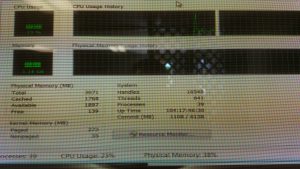5 Myths People Believe About Microsoft Windows
This is a list of things I can think of that people I have encountered (or have read online) said that they believe about Microsoft Windows. There are a lot of myths floating around out there, and I am going to try to debunk a few.
- It is always best to manually install Windows Updates, since having Windows Update automatically install updates for you can break your system with a bad update.
True…a bad Windows update can render the operating system install useless. However, where the myth comes in is the idea that it is always bad to have Windows automatically do updates for you.
Windows updates contains fixes which include security fixes. Without these security fixes, your computer is vulnerable to many “nasties” out there that may exploit a security vulnerability that was found.
I would say most computer users would never (I repeat…never) install updates on their own, unless the operating system did it for them. Why? Simple. Many computer users do not have a good understanding of computer security and they would not want to be bothered with manually installing system updates.
I alone manage 20+ Windows systems (not counting several Linux boxes). I absolutely do not have the time to go through each and every system, to manually install system updates. Having the operating system do automatic updates for me saves a lot of time.
- The User Account Control (UAC) that was introduced with Windows Vista does not really help stop malware, and in fact gets in the way.
To be fair, UAC can potentially “get in the way” so to speak, but what I suspect many computer users do not know (or at least understand) is that UAC makes it easy to be a system administrator and a limited system user at the same time.
In short, UAC assists a system administrator with his or her job by allowing the administrator to perform administrative tasks while still being secure running under his or her own limited user account by default.
Also, if you click “no” to a UAC prompt, and the program it prevents from running due to you clicking “no” contains malware, then UAC did technically stop the malware from running with administrator privileges in the first place. So anyone who says that UAC is not a security feature is technically incorrect.
- Windows is insecure no matter how many times it gets updated.
Windows is not “inherently insecure”. Windows supports many different security features like: Access Control Lists, Mandatory Access Control, Disable Memory Execution, Address Space Layout Randomization, integrated firewall (Windows Firewall), etc.
Not to mention Windows NT was designed from the beginning to be a multi-user, networking capable operating system, for small and large businesses alike to use. This was before the consumer NT versions came out onto the market (e.g., Windows XP).
- Windows has a fragmentation problem with the NTFS file-system. Where Linux and UNIX file-systems do not have this problem.
Fragmentation happens on any file-system. It is a classic ordering problem. When you delete files on NTFS, ext4, ext3, UFS, FAT16, FAT32, XFS, ReFS, ZFS, etc., you leave gaps in the file-system.
These gaps will be filled with other files, but you will also have files before and after the new file. So when the computer goes to access the data, it has to sift through all of the data to find the bits and pieces it needs to complete the task.
Saying that Linux file-systems (e.g., ext4 or XFS) do not get fragmentation, while Windows file-systems (e.g., NTFS or ReFS) do, is just plain wrong.
- Windows is not stable. It will crash on you at any given moment for no apparent reason. Windows is just unstable.
You will find that in 98%+ of these cases, this is due to bad hardware and/or drivers. This goes for any mature operating system out there not just Windows.
Also, here is a little bit of proof that Windows is not “unstable” as many people (usually Linux users) like to claim.
Notice in the picture, the Windows system uptime is over 100 days straight. This is a Windows 7 media system continuously playing video using the VLC Player.
Posted in Computers, Internet and Servers, Operating Systems
